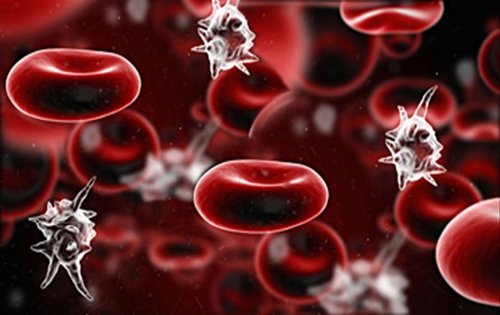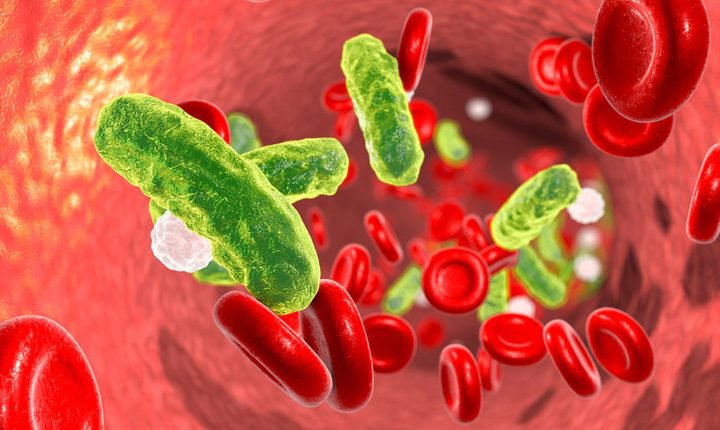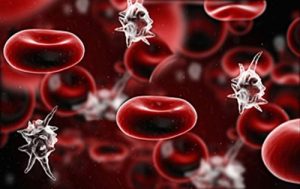Septicemia: Causes, signs and treatment
22/10/2020
Sepsis is not a disease, but it is considered a serious condition. Despite the remarkable advances in modern medicine, sepsis is still a challenge for doctors because of the high risk of death. Statistics from the World Health Organization (WHO) show that every year, 30 million adults, 3 million infants and 1.2 million children are infected with bacteremia worldwide. Of these, 6 million adults and 500,000 infants died because of this.
Sepsis is one of the leading threats with a high risk of mortality, burdening treatment costs, length of hospital stay and antibiotic resistance. In particular, antibiotic resistance is a global problem of special concern to the health sector of countries.

What is a blood infection?
- Sepsis (or sepsis, septic shock, multi-organ dysfunction syndrome) is a collection of diseases that occur when bacteria enter the body, secrete toxins that lead to multiple organ failure. organ, blood clotting disorder or liver failure, kidney failure… When it comes to sepsis, people often refer to terms such as Septicaemia and Sepsis, but until now, these concepts are often confused:
- Septicaemia: The term Septicaemia refers to an infection of the blood caused by bacteria. When Septicaemia is diagnosed, it means that the patient’s blood already has growth of bacteria.

- Sepsis: Sepsis is an infection of the blood caused by bacteria, viruses, fungi, not only in the blood but also in many other organs in the body. The diagnosis of Sepsis means that the patient has a foci of infection and the development of systemic inflammatory response syndrome (SIRS).
- Severe Sepsis: Severe sepsis, septicemia with organ dysfunction, hypoperfusion and hypotension, blood distribution disorders, oliguria, or sudden change in consciousness and disturbances other turmoil.
- Septic Shock: A state of septic shock. Patients who have progressed to septic shock often have severe sepsis, hypotension despite adequate fluid resuscitation, and perfusion abnormalities.
Note: The term septicaemia was formerly used to refer to an infection with evidence of overgrowth of bacteria in the blood, commonly known as sepsis. Today, doctors and healthcare professionals no longer use the term Septicemia broadly in order to eliminate confusion with similar terms.
Causes of bacteremia?
According to Dr. Bach Thi Chinh, Medical Director of the Children and Adult Immunization System, when determining the state of bacteremia, the doctor will determine the “entry” of bacteria is in the skin, respiratory system, Digestive or urinary system Sepsis is mainly caused by bacteria entering the bloodstream directly or from infection sites in tissues and organs such as skin, soft tissues, muscles, bones, joints, etc. respiratory, digestive…

Acute sepsis caused by bacteria circulating in the blood; They cause diverse clinical symptoms, multi-organ failure, septic shock with a very high mortality rate that can range from 20 to 50% of cases.
In fact, there are a number of risk factors that lead to septicemia, including: the elderly, infants, premature babies; people who use immunosuppressive drugs, long-term corticosteroids, anti-rejection drugs, are undergoing chemotherapy and radiation therapy; people with chronic diseases such as: diabetes, HIV/AIDS infection, cirrhosis of the liver, heart valve disease and congenital heart disease, chronic lung disease, chronic kidney failure; patients who have had splenectomy, are alcoholics, have malignant blood diseases, agranulocytosis; Patients who use devices or instruments that penetrate the body but use intramedullary nailing, catheterization, endotracheal intubation…
Signs and symptoms of sepsis
“Sepsis is not a disease, it is a very serious infection that can have many dangerous complications. Therefore, people often say that sepsis can be fatal from just a small scratch. Therefore, determining the cause, the entry gate of microorganisms plays a key role in determining the effectiveness of treatment,” – Doctor Bach Thi Chinh recommended.

The most worrisome of sepsis is the combination of clinical manifestations of an infection – very severe systemic toxicity, shock (shock), multiple organ failure, and rapid death. Symptoms can be:
- Fever: A high fever above 38oC is the first and most important sign of sepsis.
- Hypothermia: Although fever is the most important sign, in rare cases the body’s response to infection is hypothermia. Studies have demonstrated that hypothermia can be a more severe sepsis and a worse prognosis.
- Chills: When fever, accompanied by chills and some other typical signs, the patient can be diagnosed with sepsis.
- Rapid breathing: If an infection occurs in the lungs, the amount of oxygen the body inhales is reduced so the patient must breathe faster to meet the oxygen supply, which makes it difficult for the patient to breathe.
- Soreness: Pain can occur in the whole body or just some parts.
- Heart palpitations, low blood pressure: When there is an infection, the heart tries to pump blood away to fight the infection, so the beat will be faster than normal.
- Low blood pressure is one of the symptoms that can lead to septic shock – the most serious stage of sepsis.
- Discoloration of the skin: When sepsis occurs, the body will prioritize transporting blood to the most important organs of the body, blood will also move from the less important organs to the important organs to help you stay alive. As a result, the amount of blood to the skin may decrease and make your skin turn purple, pale.
- Neuropsychiatric: in different degrees: fatigue, lethargy, lethargy or excitement, the most severe is coma. Consciousness is often accompanied by septic shock.
- Hepatomegaly and splenomegaly is a response of the endothelial system, which is more common than splenomegaly. Characteristics: hepatosplenomegaly 1-3 cm below the costal margin, soft, pressing.
Source https://vnvc.vn/
Bài viết liên quan
- How dangerous is prostate cancer?
- Overview of Acute Coronary Syndrome (ACS)
- Hemophilia: Causes, symptoms, diagnosis and treatment
- 6 things to know about cervical cancer
- Hyperthyroidism and cardiovascular complications
- Some things to know about high blood pressure
- 70% of people with diabetes in Vietnam have not been diagnosed
- Patient satisfaction is top priority: Prime Minister
- Local residents get free medical service



